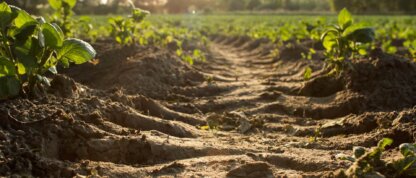
Carbon footprint calculation is responsibility based on knowledge

Managing the company’s climate impacts is not just a buzzword, when the impact calculations can be verified scientifically. Carbon footprint calculation produces trustworthy data about environmental impacts.
Making climate claims is not an easy task. Claims about the environmental friendliness of products made based on assumptions without calculations and scientific basis can quickly create the impression of greenwashing, and may turn against the company’s brand.
According to a study by the Nordic corporate responsibility network FIBS, responsibility affects Finnish consumers’ purchasing decisions, but consumers think that companies still need to improve with product labels. More than a quarter of consumers expect clearly presented and science-based information about the responsibility of the product.
International calculation models as guidelines
International environmental standards create common rules for the global market. The ISO 14000 standard series guides the management of environmental issues and improves the level of environmental protection.
Biocode’s calculation method is based on two standards of this series. ISO 14067 is the international standard for product-specific carbon footprint calculation, and ISO 14040 is the international standard for life cycle assessment. These provide general instructions on how to calculate carbon footprints and create a life cycle assessment.
The life cycle assessment created with the calculator is based on the guidelines of the international GHG protocol on how companies should calculate and report their emissions.
In addition to food product-specific calculations, Biocode’s calculator also makes it possible to calculate carbon footprints for initial agricultural production, in which case the calculation covers the entire food supply chain.
Agriculture produces both carbon dioxide, methane, and nitrous oxide, and the change in soil carbon stock varies depending on the farming operations. The guidelines for calculating these factors come from the guidelines for the national greenhouse gas inventories of the international climate panel IPCC.
Transparent, open and comparable data with carbon footprint calculations
The emission factors used in the carbon footprint calculator are also based on peer-reviewed scientific publications, which our experts constantly review. In addition, we work in cooperation with research institutes so that the calculation is always based on the latest information and is transparent.
Transparency and comparability are key factors in responsibility communication. Science itself always contains uncertainties, and completely consistent calculation methods are impossible to achieve. However, the most important thing is that the calculation is based on science, and everything is transparent. The calculation methodology can be seen openly in our calculator.
Verified climate actions require describing one’s own actions
Credible responsibility communication and climate claims need numbers to back them up, but the problem is often a lack of understanding and expertise.
Life cycle calculation requires expertise. Few people can manage to read through numerous reports and understand calculation formulas and methodology profoundly – and fortunately, you don’t have to, because Biocode’s calculator makes this job easier!
The calculator makes it possible to familiarize yourself with the climate effects of your own activities without a huge life cycle assessment project or a specialist. Companies of all sizes therefore have the opportunity to perform life cycle assessment and carbon footprint calculation, because all the necessary publicly available science and research is built into our online service.
The user of the calculator only has to describe his own activity, and the tool calculates the results. In this way, figures are accurate, and can be responsibly communicated to consumers. With the help of calculations, companies can also develop their operations, monitor annual development and reduce their carbon footprint.
You can find more detailed descriptions of the calculation methods from our Help Centre.
Try for free.
No strings attached.
Become part of the solution in the combat against climate change. By signing up you can immediately examine and test the carbon footprint calculations of your products.
14-day free trial, no credit card required
Completed sample calculation for the product
Testing your own product- or field-specific calculation
Training, support and reporting services require a paid plan. Personal use for farmers and producers is free.
Stay tuned and subscribe to our messages about the climate, food industry and food supply chain




